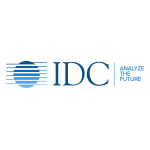
AR and VR Headsets Will See Shipments Decline in the Near Term Due to COVID-19, But Long-term Outlook Is Positive, According to IDC
FRAMINGHAM, Mass.–(BUSINESS WIRE)–#AR–Worldwide shipments of Augmented Reality (AR) and Virtual Reality (VR) headsets are forecast to decline in the first half of 2020 due to supply chain disruptions caused by the COVID-19 outbreak. According to the International Data Corporation (IDC) Worldwide Quarterly Augmented and Virtual Reality Headset Tracker, a year-over-year decline of 10.5% is expected in the first quarter followed by a 24.1% decline in the second quarter. However, assuming production ramps back up by midyear, IDC believes a rebound in the second half of 2020 will result in total shipments of nearly 7.1 million units for the year, up 23.6% from 2019. Long-term growth will be strong throughout the forecast period with shipments growing to 76.7 million units in 2024, resulting in a compound annual growth rate (CAGR) of 81.5%.
“Much of the supply chain for AR and VR headsets is shared with smartphones and PCs and many of these products are facing supply constraints as factories are operating at much lower capacity resulting in component shortages,” said Jitesh Ubrani, research manager for IDC’s Mobile Device Trackers. “However, the spread of the virus is having the opposite effect on demand as an increasing number of consumers and employees stay indoors and look to AR and VR solutions for ways to collaborate with colleagues and entertain themselves and their families.”
“Interest in VR within the enterprise continues to ramp up as more companies use the technology to drive a wide range of training scenarios. Beyond the typical examples around training people for jobs that involve expensive equipment or dangerous situations, we’re seeing a notable uptick in interest in using VR for soft skills training from line-of-business managers,” said Tom Mainelli, group vice president, Consumer and Devices Research at IDC. “And on the AR side of things, more industry verticals are looking to leverage the technology to help address challenges in knowledge capture and transfer as a growing percentage of key employees begin to age out of the workforce.”
Category Highlights
Screenless viewer shipments across both the augmented and virtual reality segments will continue to decline as more users transition off early, value-focused products toward more robust solutions. As a result, IDC expects to see a CAGR of -26.5% for combined shipments as software support wanes and the few remaining vendors in the space wind down shipments.
Standalone AR headsets will grow 244.7% in 2020 thanks to the launch of products such as the Hololens 2, as well as updated portfolios from companies such as Epson and Vuzix. By the end of 2024, IDC expects the industry to ship 24 million standalone AR headsets as demand from the commercial sector grows and more enterprise organizations incorporate AR headsets into their workflows.
Tethered AR headsets will grow over 400% in 2020, though this comes from a very small base. New products powered by Qualcomm-based smartphones should hit shelves in the holiday season barring delays due to COVID-19. Additional products such as a the second generation of North’s Focals are also expected to launch later this year, offering advanced features and broader availability. Many of these newer headsets will cater to the consumer audience, which has been largely ignored to date by most vendors who have instead focused on the enterprise market. Looking ahead, tethered AR headsets will account for 22.3% of the overall market in 2024, up from 0.8% in 2019.
Standalone VR headsets will grow 30.4% in 2020 and will represent 43.8% of all AR/VR headset shipments during the year. Vendors are targeting both consumer and commercial buyers with the latest generation of standalone products and they’re finding success in both camps. On the consumer side, gaming continues to drive growth, while on the commercial side training and collaboration are gaining additional traction. IDC expects the commercial segment to grow at a five-year CAGR of 71.9%. Future iterations of such products are also expected to offer pass-through AR capabilities through the use of outward facing cameras.
Tethered VR headset shipments declined in 2019, though we expect to see a return to growth in 2020 (up 25%) as the launch of new headsets and a more diversified lineup from brands such as HTC and other PC-focused vendors will help the category gain traction. Looking ahead, IDC expects quite a dichotomy in this market as devices like the PSVR and upcoming headsets that tether to a phone will offer an entry-level VR experience. Meanwhile, at the other end of the price spectrum, IDC expects brands such as Valve, HP, and a few others to continue to push forward with premium features such as spatial audio, high-resolution displays, as well as improved hand, finger, and body tracking. By 2024, tethered VR headsets will represent 13.4% of the overall AR/VR headset market.
|
AR/VR Headset Shipments, Market Share, and Five-Year CAGR by Product, 2020 and 2024 (shipments in millions) |
||||||
|
Product Category |
Product |
2020 Shipments* |
2020 Share* |
2024 Shipments* |
2024 Share* |
2020—2024 CAGR* |
|
Augmented Reality |
Screenless Viewer |
0.03 |
0.49% |
0.03 |
0.03% |
-7.07% |
|
Standalone HMD |
0.41 |
5.82% |
24.00 |
31.28% |
176.39% |
|
|
Tethered HMD |
0.25 |
3.49% |
17.08 |
22.26% |
188.45% |
|
|
Virtual Reality |
Screenless Viewer |
0.39 |
5.55% |
0.10 |
0.13% |
-29.16% |
|
Standalone HMD |
3.09 |
43.76% |
25.25 |
32.92% |
69.06% |
|
|
Tethered HMD |
2.89 |
40.88% |
10.26 |
13.38% |
37.30% |
|
|
TOTAL |
7.06 |
100.00% |
76.71 |
100.00% |
81.54% |
|
|
Source: IDC Worldwide Quarterly AR and VR Headset Tracker, March 18, 2020 |
||||||
* Note: Shipment Data for 2018 and 2022 are forecast projections.
About IDC Trackers
IDC Tracker products provide accurate and timely market size, vendor share, and forecasts for hundreds of technology markets from more than 100 countries around the globe. Using proprietary tools and research processes, IDC’s Trackers are updated on a semiannual, quarterly, and monthly basis. Tracker results are delivered to clients in user-friendly excel deliverables and on-line query tools.
Click here to learn about IDC’s full suite of data products and how you can leverage them to grow your business.
About IDC
International Data Corporation (IDC) is the premier global provider of market intelligence, advisory services, and events for the information technology, telecommunications, and consumer technology markets. With more than 1,100 analysts worldwide, IDC offers global, regional, and local expertise on technology and industry opportunities and trends in over 110 countries. IDC’s analysis and insight helps IT professionals, business executives, and the investment community to make fact-based technology decisions and to achieve their key business objectives. Founded in 1964, IDC is a wholly-owned subsidiary of International Data Group (IDG), the world’s leading tech media, data and marketing services company. To learn more about IDC, please visit www.idc.com. Follow IDC on Twitter at @IDC and LinkedIn. Subscribe to the IDC Blog for industry news and insights: http://bit.ly/IDCBlog_Subscribe.
All product and company names may be trademarks or registered trademarks of their respective holders.
Contacts
Jitesh Ubrani
jubrani@idc.com
415-873-0315
Tom Mainelli
tmainelli@idc.com
650-350-6455
Michael Shirer
press@idc.com
508-935-4200
